By Sherri Saines, OHIO Librarian for Social Sciences. View the original post on the Fashion, Textiles, and Costume Librarians ARLIS/NA Special Interest Group Blog, and corresponding Instagram post about Sherri’s visit to the Mahn Center.
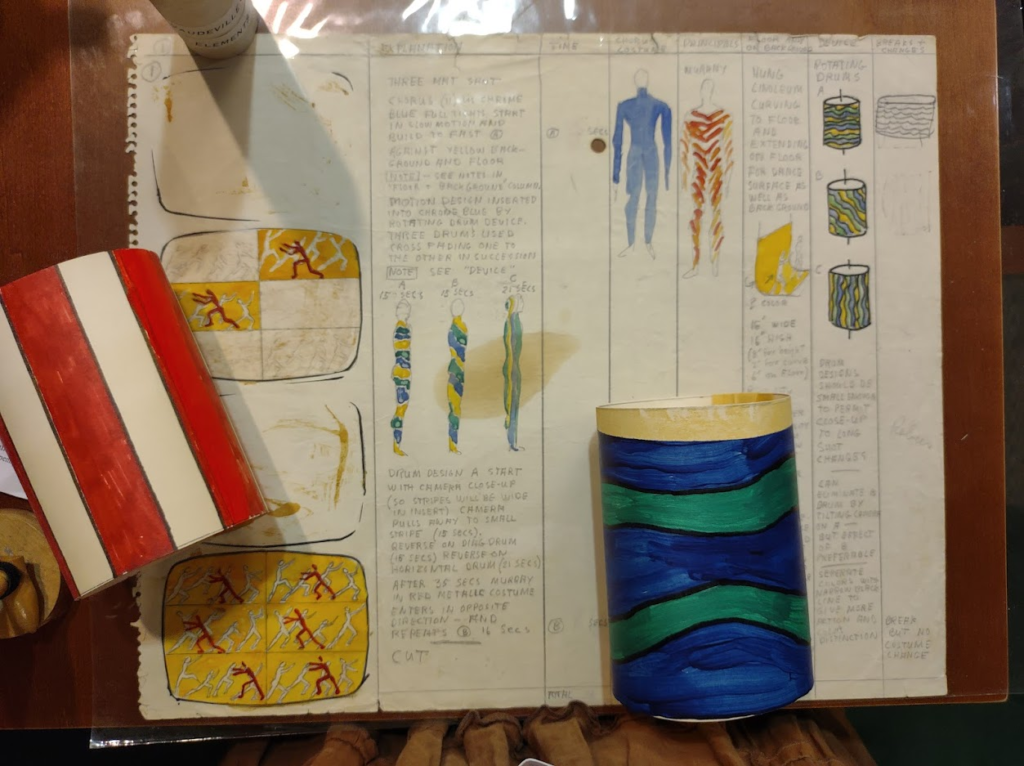
The Ohio University Libraries Archives and Special Collections (Athens, OH) holds the Alwin Nikolais and Murray Louis Dance Collection, a gift of Murray Louis. The libraries’ connection is via principal dancer Gladys Bailin who went on to head the Ohio University School of Dance until 1995. This extensive group of papers, photos, videos, sketches, and even a set of 3d costume models gives us insight into the design and choreography of this influential 20th C dance troupe.
The Nicolais/Lewis Dance Company, (circa 1948-1993), was known for pure movement and intriguing choreography that mixed movement, costume, and setting in new ways. Alwin Nikolais directed the dance school at the Henry Street Playhouse in New York in 1948 and went on to create the music, dance steps, lighting, staging, and costumes for his creations. Murray Louis came on as a dancer but soon was as involved with creation as his partner. Their many years of collaboration resulted in iconic works such as Tensile Involvement, Crucible, and Shadow Dance. (Others are findable on YouTube).
The book The Nikolais/Louis dance technique : a philosophy and method of modern dance / Alwin Nikolais and Murray Louis, 2005, describes their methods and philosophy. The Nikolais/Louis Foundation perpetuates their vision.
“The Nikolais/Louis technique is based on the philosophy that the undertaking of dance training is not a simple or singular event, but a lifelong investment in personal enrichment.” – The Nikolais/Louis Dance Technique
OU libs recently received an NEH grant to plan for the digitization of the media herein. Currently there are a few teaser files in our Digital Collections folders. Over 400 more cubic feet of shelving and boxes wait to be explored.
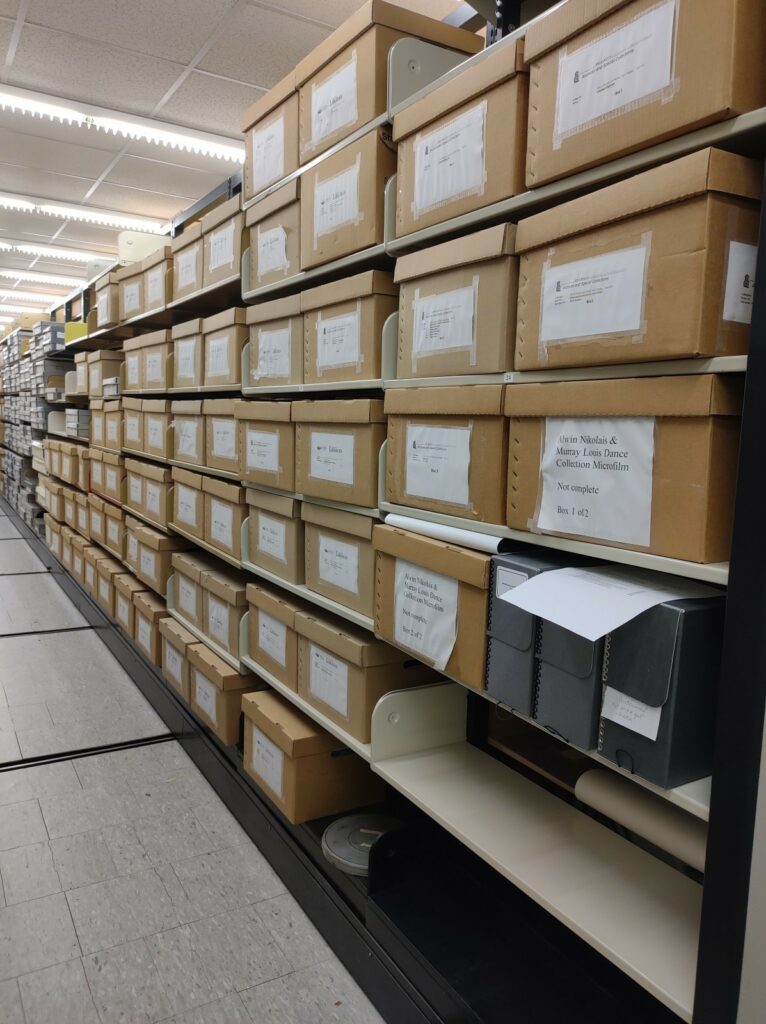
Looking into just the “sketches” folder of the online items yields doodles and color studies and lighting charts that might be the beginnings of costumes. Many research projects could be imagined from these resources: I had to restrain myself from getting lost tracing a costume from the doodle to the design to the model to the lighting charts to the stage.
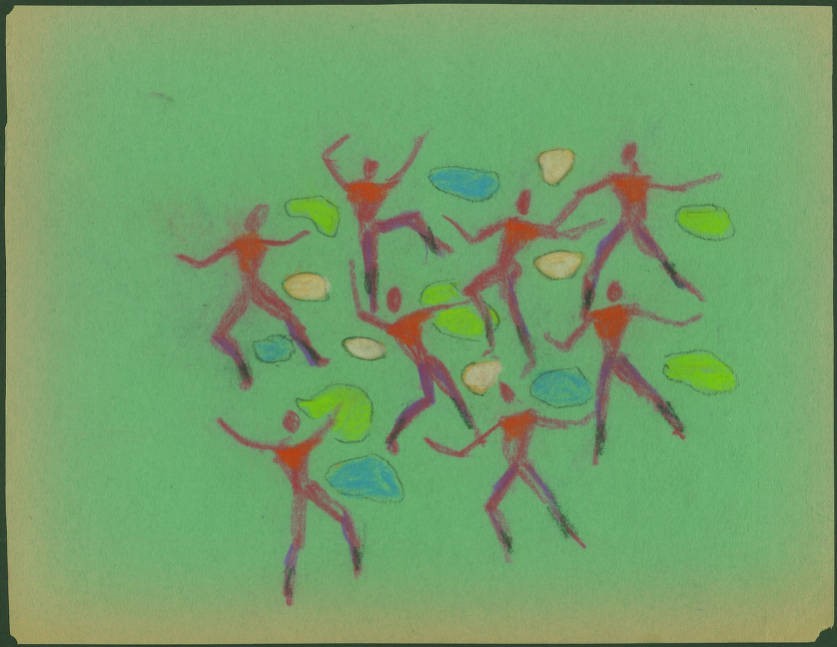
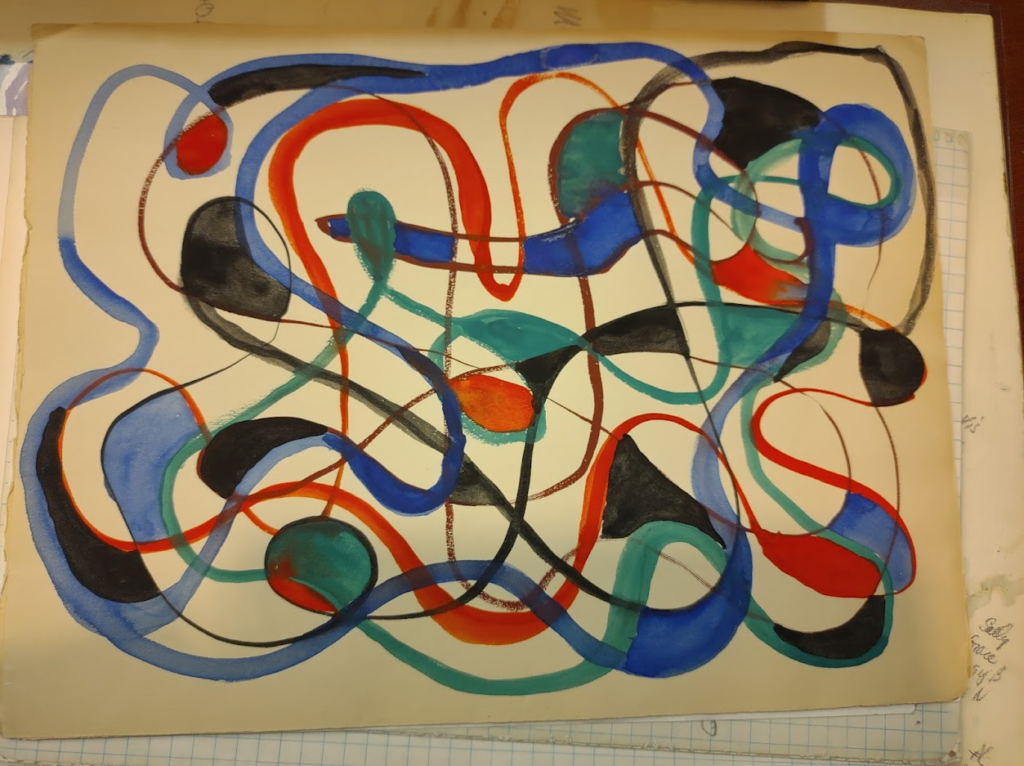
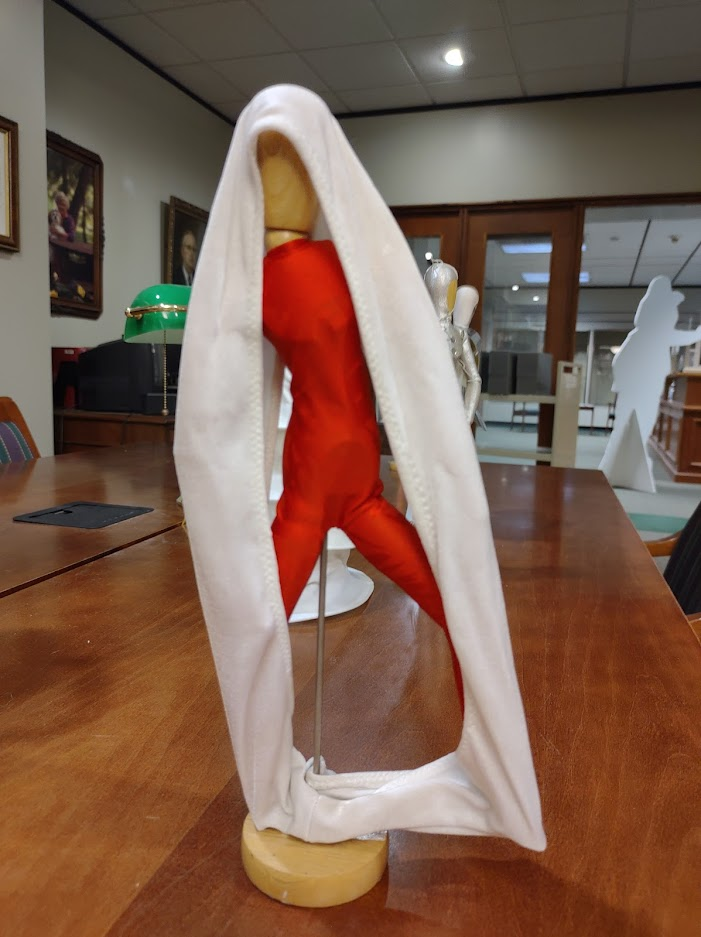
We invite researchers interested in the history of the evolution of dance and dance costume to contact Greta Suiter, Manuscripts Archivist, for a chance to see these materials in person and build your own story.